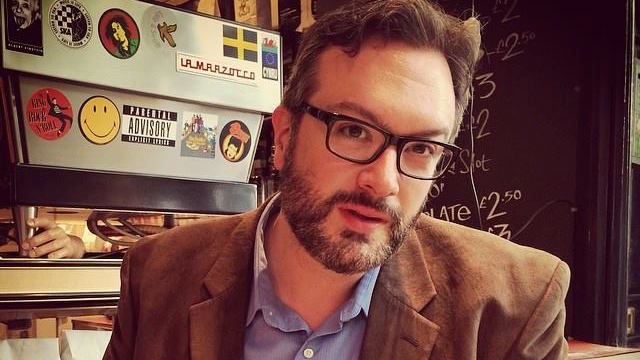I want to be proud of my profession.
I work extremely hard five days a week (sometimes more), nine hours a day (often more) as a television news reporter. I aim to inform viewers of the goings-on of their world, educate about complex issues, and uplift through stories that connect people.
I believe in the power of journalism, and I believe in the power of journalists.
So what am I to make of this?
The link shows the 2015 results of an annual Gallup survey measuring trust in the media. The conclusion? It sits in the headline:
“Americans’ Trust in Media Remains at Historical Low”
A mere 40% of Americans, per the poll, say they trust the media “a great deal” or “a fair amount”. Among adults under 50, that number drops to 36%. And of course, the differences skew politically, with Republicans and Independents trusting the press far less than Democrats.
But what stood out to me, more than the numbers, was a potential reason for them, provided by the article’s author:
Americans’ trust level in the media has drifted downward over the past decade. The same forces behind the drop in trust in government more generally, as well confidence in many U.S. institutions, may also be at work with the media.
I found that quite perceptive. Within the industry, we like to think of ourselves of voices for the voiceless; I work at a station whose tagline is “Holding the Powerful Accountable”, and we aim every day to live up to that mission.
But for many outside the industry, “the media” is as much an institution as government. Journalists have a great deal of control.
We are the powerful.
I was reminded of that as I watched the video of University of Missouri students — and several faculty members — trying to stop a student photographer from covering their #ConcernedStudent1950 protest. In a legal sense, the photographer was entirely correct; he had as much a right as the protesters to stand on that ground. Many of the tactics used by the protesters — claiming a violation of personal space while simultaneously violating the photographer’s; yelling at and pushing him while decrying his supposed lack of respect — were wrong and downright hypocritical. Even now, days later, when I watch that video, I abhor what I see.
I have heard many journalists make those absolutely valid points.
But I have heard far fewer in my field turn the focus inward.
That video highlights an issue just as critical as the rights of journalists: a widespread contempt of those journalists’ jobs.
“I’m documenting history!” shouts the photographer. The protesters don’t care, and what’s more, they say, plenty have already done that. Individuals can take photos and spread them to their own social networks; they are not particularly wowed by that ability in reporters.
“You are an unethical reporter!” yells one protester, who — despite the students’ and faculty members’ earlier attempts to encourage media coverage — possesses no faith in that media to tell their story correctly.
Then comes the point no one makes on camera, but that others have made since: Where was all this attention before the university’s football team got involved? A few dozen athletes captured the national focus where a far greater number of passionate students could not. How does that reflect on the media’s true interest in finding and telling stories that matter?
I want to again make clear I am not criticizing the student photographers in that video. If anything, I admire them for knowing their rights, standing their ground against a steady stream of bullying, and wanting indeed to document history.
But the video also slams home the point that, for so many, the media is the voice of power — and a voice that cannot be trusted.
(And this is by no means isolated. Look at the way in which Republican presidential candidates blistered the media — and to much applause — during a recent debate. Media mistrust is not necessarily a partisan view.)
In the Washington Post, Terrell Jermaine Starr makes incisive points about how journalists should respond after seeing the Missouri video. Among them:
Further, as reporters, we have to drop our sense of entitlement and understand that not everyone wants to be subjects of our journalism. Our press passes don’t give us the license to bully ourselves into any and all spaces where our presence is not appreciated. It’s one thing to demand access to public lands; it’s another to demand access to people’s grieving.
While Starr speaks specifically about why the black community in general may feel mistrustful of reporters, he writes with an underlying point that should be a central tenet of our field:
If journalism is about reaching an audience, journalists should constantly examine how we interact with that audience — and whether we build or damage our credibility in the process.
I know I am guilty of that entitlement. I assume I will receive a warm welcome at an event, and many times I don’t. I assume people will support my intent to convey their stories to a larger audience, and many times they don’t. I assume people will immediately acquiesce when faced with my legal justification for doing my job, and many times they don’t.
I assume the people I interview will believe in my profession as much as I do.
More often than not, they don’t.
But I still do.
Journalists absolutely possess plenty of power in the present day, from mass media companies to independent bloggers to college photographers. We should continue to cover the stories that matter, even if our collective presence is not always appreciated.
But we must also regularly discuss where the line falls between journalistic duty and humanistic decency. I side with the photographers here, but I have also witnessed numerous instances where media members invade people’s space and privacy for stories with far less gravity. We must approach our jobs with sensitivity to how we are perceived, and we cannot wait to have these conversations until one of us “becomes the story”.
The best storytellers, today and down the road, will be the ones who understand their viewers and readers — and make the extra effort to earn their audience’s respect.
Matt Pearl is the author of the Telling the Story blog and podcast. Feel free to comment below or e-mail Matt at matt@tellingthestoryblog.com. You can also follow Matt on Facebook and Twitter.



